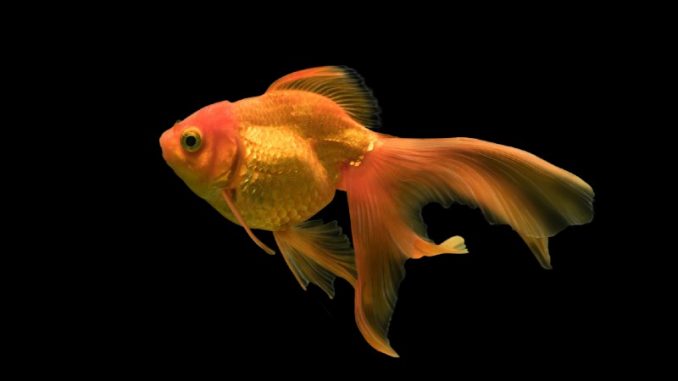
There are so many types of fish in the aquarium industry that it can be very difficult to choose a variety to keep at home.
Fish that look different and stand out have the best chance of being picked. Pop Eyed Fish will grab your attention with their large telescopic eyes.
They are easy to care for and breed, making this a great choice for beginners. An added bonus is that they can live in cold water, so you might not have to buy a heater.
This guide will walk you through everything you need when caring for Pop Eyed Fish.
TABLE OF CONTENTS
Pop Eyed Fish Facts & Overview
| Category | Rating |
| Care Level: | Easy |
| Temperament: | Peaceful |
| Color Form: | Black |
| Lifespan: | 10-15 years |
| Size: | 6-8 inches |
| Diet: | Omnivore |
| Family: | Cyprinidae |
| Minimum Tank Size: | 20 gallons |
| Tank Set-Up: | Freshwater with live plants |
| Compatibility: | Peaceful community |
Pop Eyed fish are a type of Goldfish in the Cyprinidae family, which also contains minnows and carps, from which they are descended.
More specifically, they are a type of fancy goldfish, which are known for having an egg-shaped body and double fins.
Many varieties of Fancy Goldfish have a distinctive, characteristic feature. For Pop Eyed Fish, this is their large, telescopic eyes.
The species is also commonly known as Black Moor Goldfish, so look out for this name in stores too.
You wouldn’t be able to find these fish in the wild, since they have been selectively from carp since the 1700s bred to look the way they do today.
They are easy fish to care for, so beginners can feel confident if they are just starting out.
Pop Eyed Fish are extremely popular, so they are found in virtually all pet stores. For this reason, they are quite cheap, costing no more than $5 per fish.
They can be prone to disease, so check any prospective purchases for signs of illness before buying. Go elsewhere if you spot anything.
A healthy fish could live for up to 15 years in your aquarium.
Typical Behavior
Pop Eyed Fish shows no signs of aggression towards tank mates, but you still need to be careful about compatibility. Steer clear of boisterous fish or those that might nip long-flowing fins.
They naturally display shoaling behaviors, choosing to group up with their own kind most of the time. Keeping them singly could cause loneliness.
Pop Eyed Fish can be easily harassed due to their slow swimming speeds. They enjoy a peaceful environment where they can gently swim in the middle levels of the water.
These fish will hide away when stressed though.
Appearance
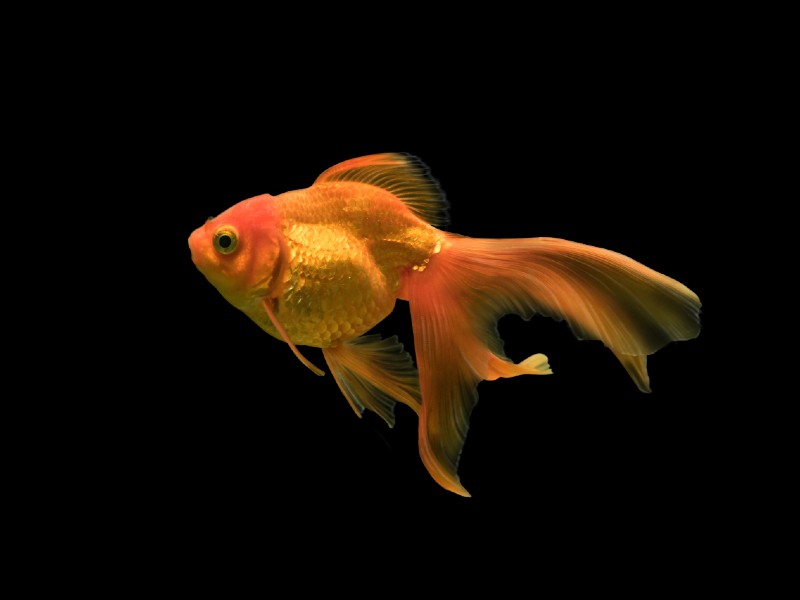
These fish are very distinguishable from other Goldfish. They have large telescopic eyes that bulge from their head. The large lenses mean they are sometimes called telescope goldfish.
Pop eyed fish actually has pretty bad eyesight, despite the large eyes.
As fancy goldfish, they have an egg-shaped body. This is coated in a solid black for most individuals; some have a few orange blotches mixed in.
A fully grown fish can reach 6-8 inches from the front of its head to the tip of its tail.
Another feature of being a Fancy Goldfish is having a double caudal fin. Pop Eyed Fish have long flowing fins that are black like the body.
These fish can change in appearance a lot as they age. Their colors will get darker and their eyes will gradually grow larger, bulging further and further.
Sexing them can be tough. If you wait until spawning season (April to August), you may spot males as they have small white breeding tubercles on their pectoral fins.
Habitat and Tank Conditions
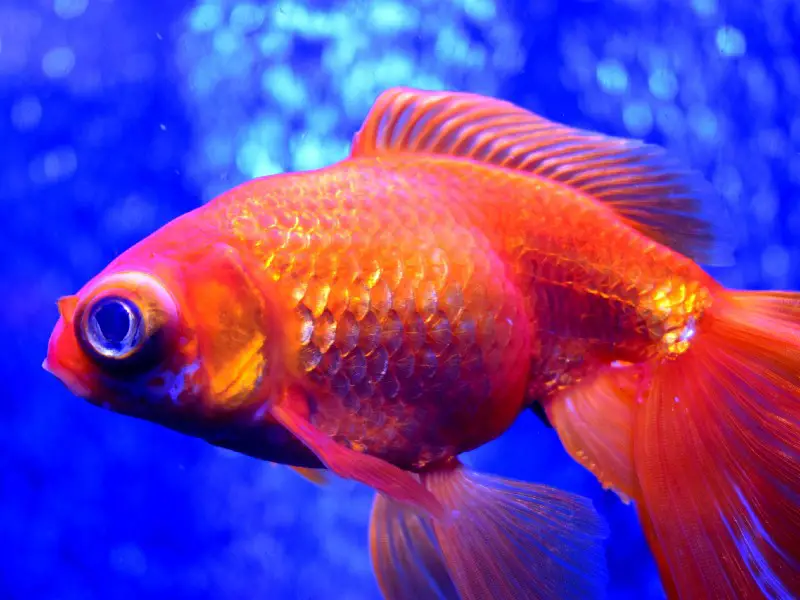
The best way to design an aquarium for your fish is to look at their natural environment.
However, Pop Eyed Fish aren’t found anywhere in the wild. They have been selectively bred since the 1700s to look the way they do today.
Something you can do instead is model the habitat of the closely related Asian Carps. Despite the name, Asian Carp are found around the world as an invasive species.
They live in freshwater habitats like rivers and lakes. The water would be slow-moving and quite gloomy, with not much light coming from above.
The water would be relatively cold. This is useful for keeping Pop Eyed Fish in captivity, as you can often keep them without a heater.
Tank Conditions
Choose sand or gravel to cover the bottom of the tank. The decision isn’t too important, since Pop Eyed Fish don’t spend much time in the lower levels of the tank.
You can spread out decorations in whichever way you think looks best. These act as hiding spots for your fish. Live plants are another good way to do this, and will definitely be appreciated.
Keep the water between 50°F and 75°F, with a pH of 6.5-7.5.
You will need a filter in the tank, but you probably won’t need a heater. Standard aquarium lighting is fine, and you can add an air pump if you want.
What Size Aquarium do they need?
Your tank will need to be at least 20 gallons for just a few. They can take up lots of space with their long fins, so leave plenty of swimming space.
For each additional fish, provide 8-10 gallons.
Tank Mates
Pop Eyed Fish are very peaceful, so they can live alongside other peaceful species of a similar size or smaller.
You should avoid boisterous species since these fish are slow-moving and could be picked on easily. They find it difficult to escape to the safety of shelter.
Avoid any infamous fin-nipping species. Pop Eyed fish have long fins that make an obvious target. Many barbs are notorious for this.
Some good options include Tetras, Danios, Mollies, Guppies, Dwarf Gourami, and Corydoras Catfish. There are many possibilities, as long as they are happy in the same temperature range.
You could always keep invertebrates in the tank too. Most shrimps and snails can live with your Pop Eyed Fish, they will ignore each other most of the time.
Can You Keep Pop Eyed Fish Together?
Yes, you can keep these fish in groups. In fact, they enjoy being in each other’s company and will often gather up together as a shoal.
Don’t keep them singly, as loneliness may raise stress levels.
Diet
There are loads of ways to design a diet for your Pop Eyed Fish. They are omnivores, eating both plants and meats, so they accept most common aquarium foods.
Try to choose high-quality foods. Fancy Goldfish are known for having problems with their digestive systems.
This means choosing live/frozen foods (like bloodworms) and chopped up green vegetables instead of dried foods (flakes and pellets).
You can use dried foods, as long as they are supplemented with these other options. A varied diet is the best way to provide a range of nutrients.
To further ease the work on their digestive systems, break up feeding by giving your Pop Eyed Fish small amounts of food 2-3 times a day.
Care
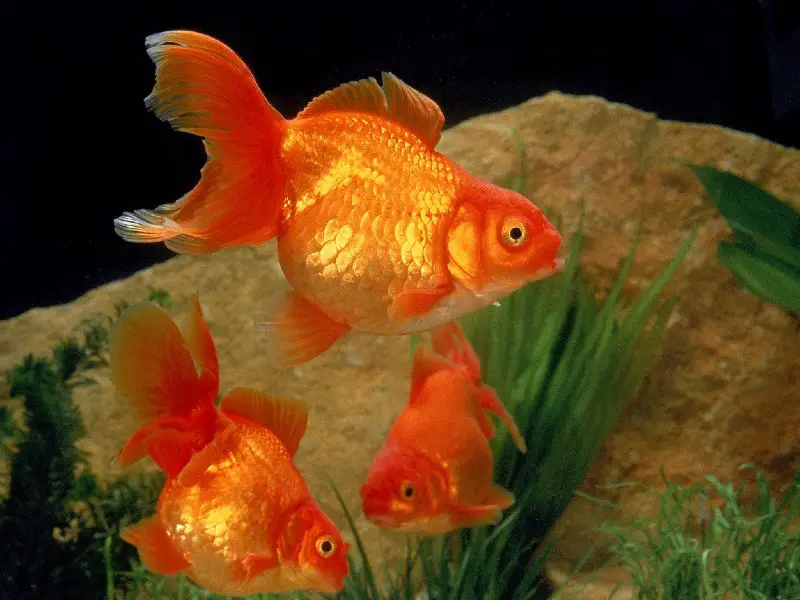
If you can keep your tank clean and maintain healthy conditions, your Pop Eyed Fish should stay healthy.
Perform regular water changes and wipe away excessive algae when you see it. Use a water testing kit each week so you can spot changes in the water parameters quickly.
Their obvious physical weakness is their eyes. They have large eyes but poor eyesight, so they could easily bump into things around their tank. Avoid having any sharp objects in your aquarium.
Disease can be an issue for Fancy Goldfish. They have been selectively bred to have an egg-shaped body, but this squashes up all their organs.
Swim bladder disease is common. The fish will be floating at the surface or laying on the substrate since the swim bladder is key for maintaining buoyancy.
There are lots of medications available in pet stores to treat common freshwater diseases, but transfer them to a quarantine tank first, to prevent the spread of disease to your other fish.
Breeding
Pop Eyed Fish are very easy to breed in captivity. It often happens without any intervention from an aquarist, if there is at least one male and one female in a tank
You can try triggering spawning by gradually raising the water temperature by 3°F a day up to 75°F.
A male will circle a female to court her and get her to mate with him. They will spawn and lay up to 10,000 eggs around the aquarium.
At this point, separate the parents so they can’t start eating their eggs.
The eggs will hatch after a few days. Feed the fry tiny foods (such as infusoria) that are high in iron and protein until they are big enough to eat like adults.
Are Pop-Eyed Fish Suitable for Your Aquarium?
Pop Eyed Fish are very easy to care for due to their peaceful nature and simple needs. This makes them an excellent starter fish for new beginners, but even experienced aquarists will enjoy keeping them.
Set up the aquarium to meet their needs and clean it regularly to keep these fish happy and healthy. They will likely breed on their own too, with little intervention for you.
Pop Eyed Fish are unique, making a distinctive and captivating addition to any home.
Are Pop Eyed Fish your favorite type of Goldfish? Let us know in the comments below…

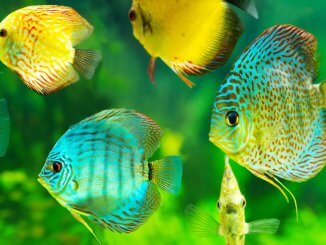
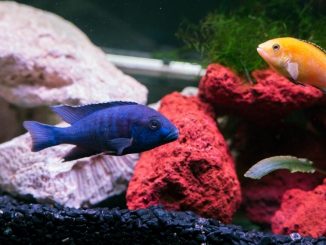
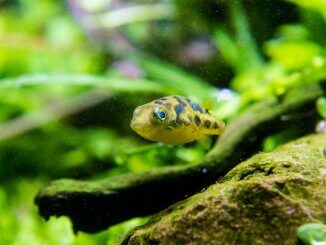
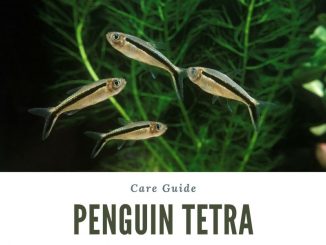
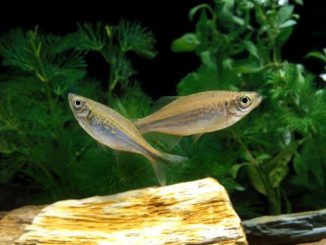
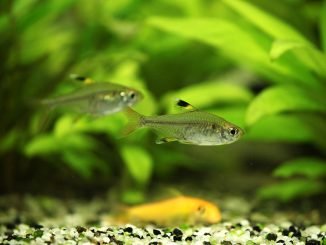
Be the first to comment